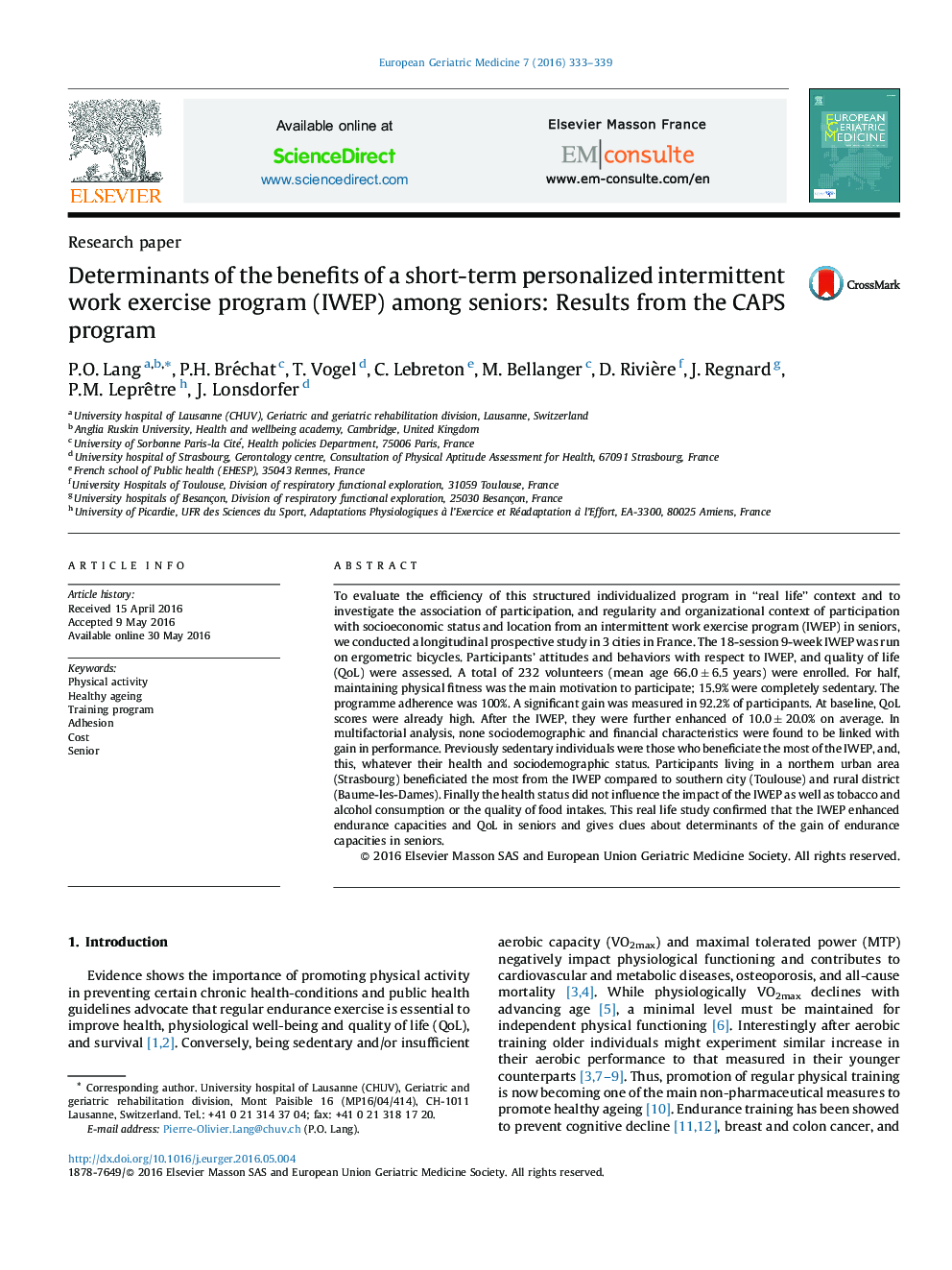| Article ID | Journal | Published Year | Pages | File Type |
|---|---|---|---|---|
| 5662546 | European Geriatric Medicine | 2016 | 7 Pages |
To evaluate the efficiency of this structured individualized program in “real life” context and to investigate the association of participation, and regularity and organizational context of participation with socioeconomic status and location from an intermittent work exercise program (IWEP) in seniors, we conducted a longitudinal prospective study in 3 cities in France. The 18-session 9-week IWEP was run on ergometric bicycles. Participants' attitudes and behaviors with respect to IWEP, and quality of life (QoL) were assessed. A total of 232 volunteers (mean age 66.0 ± 6.5 years) were enrolled. For half, maintaining physical fitness was the main motivation to participate; 15.9% were completely sedentary. The programme adherence was 100%. A significant gain was measured in 92.2% of participants. At baseline, QoL scores were already high. After the IWEP, they were further enhanced of 10.0 ± 20.0% on average. In multifactorial analysis, none sociodemographic and financial characteristics were found to be linked with gain in performance. Previously sedentary individuals were those who beneficiate the most of the IWEP, and, this, whatever their health and sociodemographic status. Participants living in a northern urban area (Strasbourg) beneficiated the most from the IWEP compared to southern city (Toulouse) and rural district (Baume-les-Dames). Finally the health status did not influence the impact of the IWEP as well as tobacco and alcohol consumption or the quality of food intakes. This real life study confirmed that the IWEP enhanced endurance capacities and QoL in seniors and gives clues about determinants of the gain of endurance capacities in seniors.
